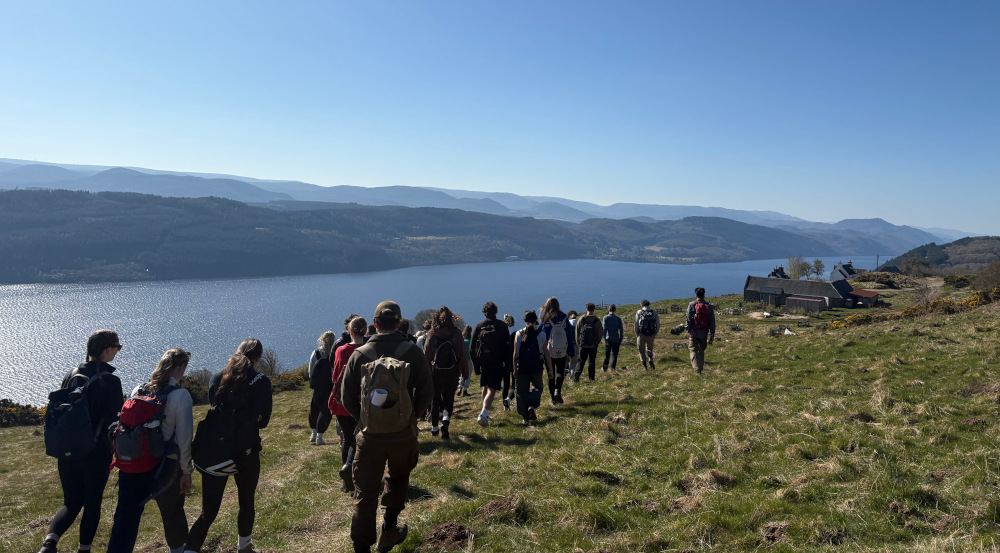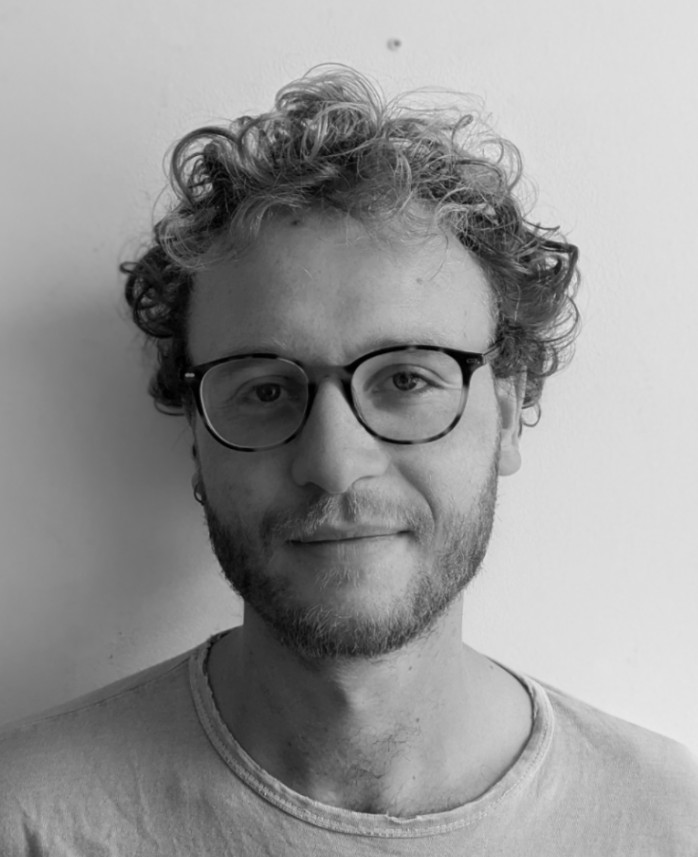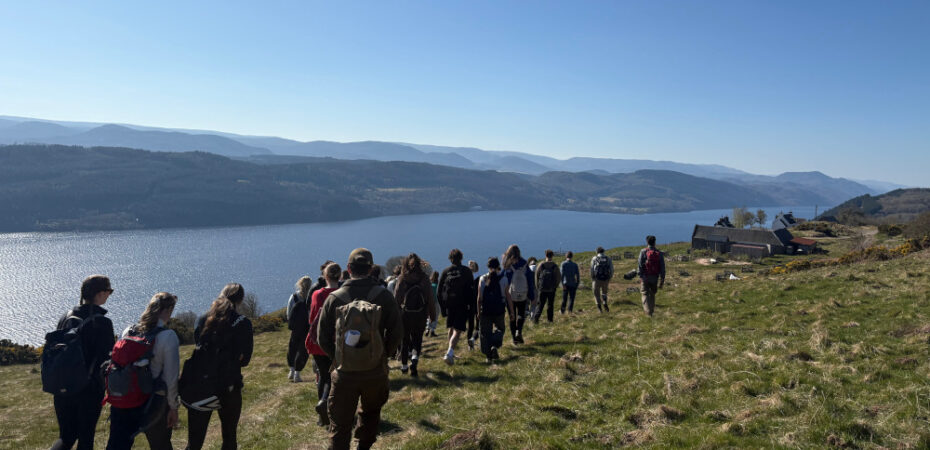
In this extra post, Sarah Kline and Felix Clarke build on their previous Teaching Matters post –Repetitive pedagogy: Poster-making as a recursive and creative form of assessment – to explore the opportunities and challenges that repetitive pedagogy affords in the design of assessments on new field courses. Sarah and Felix are tutors on the Scotland’s Futures course as well as PhD students.
The issue: low attendance rates
In 2025, the field course, Scotland’s Futures, ran for the first time within the School of GeoSciences’ Geography MA Degree Programme (please see our previous post for more details on the specific course design). A key aim of Scotland’s Futures was to develop student cohesion, and repetition played a valuable role in this effort. As tutors in the School of Geosciences, we have noticed that low student attendance to tutorials and lectures is a growing concern. We have both tutored across several courses where attendance rates are regularly less than 50%. This issue is particularly worrying because higher attendance is linked to higher grades and vice versa (Lozano-Parra, 2025). Nonetheless, the issue remains and contributes to a lack of cohesion among students and their cohort. Limited research has explored whether cohesion impacts key academic success indicators, although Thornton et al., (2020) have found that increased class cohesion is linked to higher attendance. Furthermore, they specified that cohesion develops over time and is due to repeated engagements.
Developing cohesion through field trips
Field trips as mechanisms for cohort building are a staple within Geography degree programmes. However, we’ve both heard from previous Geography MA students that they were ‘jealous’ of their peers from the Geography BSc, who have more regular field trips and consequently “all know each other better”. This is in part due to the disparity in size between the programmes, where the MA course is larger than the BSc, meaning that opportunities for fieldwork remain more limited. Scotland’s Futures begins to redress this imbalance by injecting more field teaching into the MA, in this case, through a five-day field course to Inverness.
At the start of the course, the students were assigned to small project groups that they worked in from the first tutorial to the end of the field trip. These project groups were nested in wider tutorial groups that also remained consistent throughout the course and activity day groups that were in place throughout the field trip. This consistency in group allocation provided multiple, repeat engagements between students, offering students opportunities to meet and socialise with their peers through activities such as a scavenger hunt and ceilidh.
Alongside this social repetition, the students worked together on multiple posters across multiple field sites in their groups. This use of repeated engagements and activities (see our previous post) within the course helped to foster student cohesion. This course design offers an alternative model for cohesion building within the constraints of a larger programme where opportunities for field classes may be more limited.
Repeated engagements during Scotland’s Futures allowed for this cohort of Geography MA students to bond. Consequently, this addressed a key aim of the course, which was to help students feel at home in the Geography MA programme. At the end of the course, students were asked to provide feedback in the form of a poster. 70% of the student feedback posters emphasised the many opportunities for meeting and bonding with their peers. Some feedback included:
“formed new bonds/met new people (because of room and group arrangements)”
“brought me closer to people on my course and made me more positive about 3rd year”.
While field trips in and of themselves are good for building cohesion, we feel Scotland’s Futures may have been especially successful in this regard, in part because it was a formal aim of the course. However, we feel that without the repetition of working in the same groups, which significantly supported and enabled the development of these bonds, this aim may not have been as resoundingly achieved.
Conclusion
In this post, we have explored the advantages of repetitive engagement between peers for developing cohesion amongst a cohort of 2nd year Geography MA students. We found that students reacted positively to the design of this new course, especially regarding the deliberate incorporation of fixed project groups which allowed students to meet and work collaboratively throughout the duration of the course. This allowed them to get to know one another better.
Acknowledgements
We would like to express our gratitude for all of the students who participated in the inaugural voyage of Scotland’s Futures, and for the feedback they generously provided. We’d also like to thank the Course Organiser for Scotland’s Futures, Fraser MacDonald, for encouraging us to write these blogs and for providing feedback on earlier drafts.
We would also like to extend our thanks to the other staff and convenors of the course, not only for their efforts in the design and implementation of the course but for their feedback and support in the creation of this blog. Finally, we would like to thank Prof. Dan Swanton for encouraging us to write and submit this blog to Teaching Matters.
References
Lozano-Parra, J., 2025. Class attendance and academic performance in geography programs. Journal of Geography in Higher Education 49, 173–184. https://doi.org/10.1080/03098265.2024.240307
Thornton, C., Miller, P., Perry, K., 2020. The impact of group cohesion on key success measures in higher education. Journal of Further and Higher Education 44, 542–553. https://doi.org/10.1080/0309877X.2019.1594727
 Sarah Kline
Sarah Kline
Sarah Kline (she/her) is a PhD student in human geography and an Associate Fellow of the Higher Education Authority. Her research explores youth geographies and intersections with climate change and cultural heritage.
 Felix Clarke
Felix Clarke
Felix Clarke (he/him) is a PhD student in human geography, and an Associate Fellow of the Higher Education Authority. He is co-coordinator of the School of Geoscience’s internal ‘Talking about teaching’ events series on ‘student autonomy’ for the academic year 2025-26. His research is on environmental politics and the relationships between humans and non-human animals.


